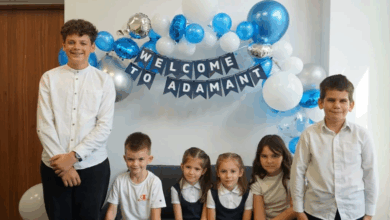AI use by students up sharply

An AI-based text analysis and plagiarism detection company has released alarming new data about students.
Across tens of thousands of college and high school students in seven countries, the company Copyleaks scrutinized the trends in AI and plagiarism detection over the past year.
It found changing habits regarding AI usage and plagiarism in schools and reports a 76% surge in AI-generated material over the year.
The analysis revealed that while AI-generated content among students increased year to year, plagiarism rates experienced a notable decrease of 51% during the same period, underscoring the academic integrity standards that are being put in place around the world.
“As the data highlights, students have gradually adopted generative AI over the past year. However, the data around plagiarism rates strikes me as most insightful. While there has been a decrease in the rate of plagiarism, it still persists, whether it be from GenAI outputs or students themselves, meaning it’s still a concern that needs to be addressed.” said Alon Yamin, CEO and co-founder of Copyleaks. “That’s why it remains an absolute necessity for academic institutions to adopt comprehensive solutions that can detect AI-generated content and plagiarism to ensure full transparency and maintain academic integrity.”
The study found widespread AI adoption and subsequent detection across various countries. Australia had the highest average rate, with 31% of scanned assignments containing AI throughout the year.
But even as AI adoption grows, plagiarism garners concerningly high detection rates, with the UK (33%) and the U.S. (30%) averaging the highest across countries.
Additional key findings from the analysis included:
- As AI adoption increases among students, it’s showing up in more of their work: Throughout the year, there was a noticeable increase in AI adoption among students. In January and February 2023, the average percentage of scanned assignments containing AI content was 12% and 11%, respectively. However, detection rates significantly rose later in the year, reaching 25% in November and December 2023.
- AI and plagiarism detection is highest among online schools: E-learning institutions demonstrated the highest levels of AI and plagiarism detection among scanned assignments, at 26% and 39%, respectively. This highlights that in-person learning, to some extent, inhibits these practices. Nonetheless, plagiarism persists across all academic settings, with rates of 29% in high schools and 28% in colleges.
- Career and technical colleges recorded the highest rate of AI usage, while community colleges had the highest plagiarism rates. There was significant consistency in the rates of plagiarized content among different institutions. The average percentage of scanned assignments containing AI at career and technical colleges was 23%, while community colleges had a 32% rate for plagiarism. Both private and public schools recorded a 28% plagiarism detection rate, with AI content detection rates of 19% and 14%, respectively.
“Rates of AI-generated content will only increase as students adopt these tools more widely,” added Yamin, “As such, oversight is critical for empowering content authenticity and originality.”
With the increasing availability and sophistication of AI technologies, academic integrity faces new and complex global challenges of cheating, the company finds.
In 2023, BestColleges surveyed 1,000 undergraduate and graduate students to gauge their use of AI. The study found 56% of college students have used AI on assignments or exams. But 41% of students say they have not used it, and 4% declined to answer.
College professors are also specifically incorporating AI into assignments. Half of students (53%) say assignments required them to use artificial intelligence. Almost 80% of students said instructors discussed the use and ethics of AI in assigments.
–Metro Voice







